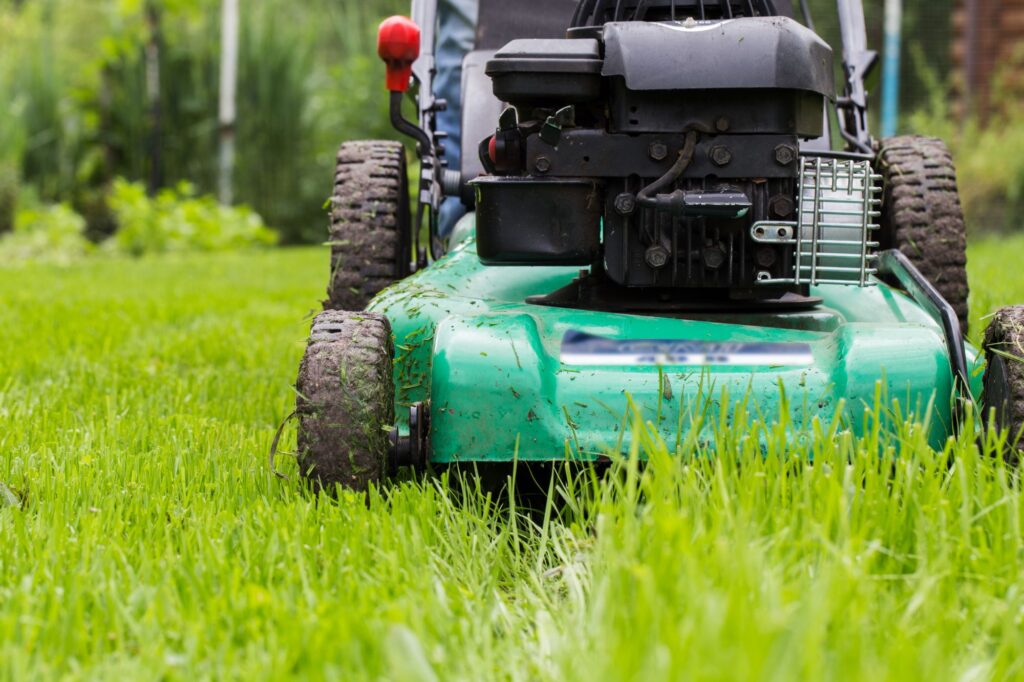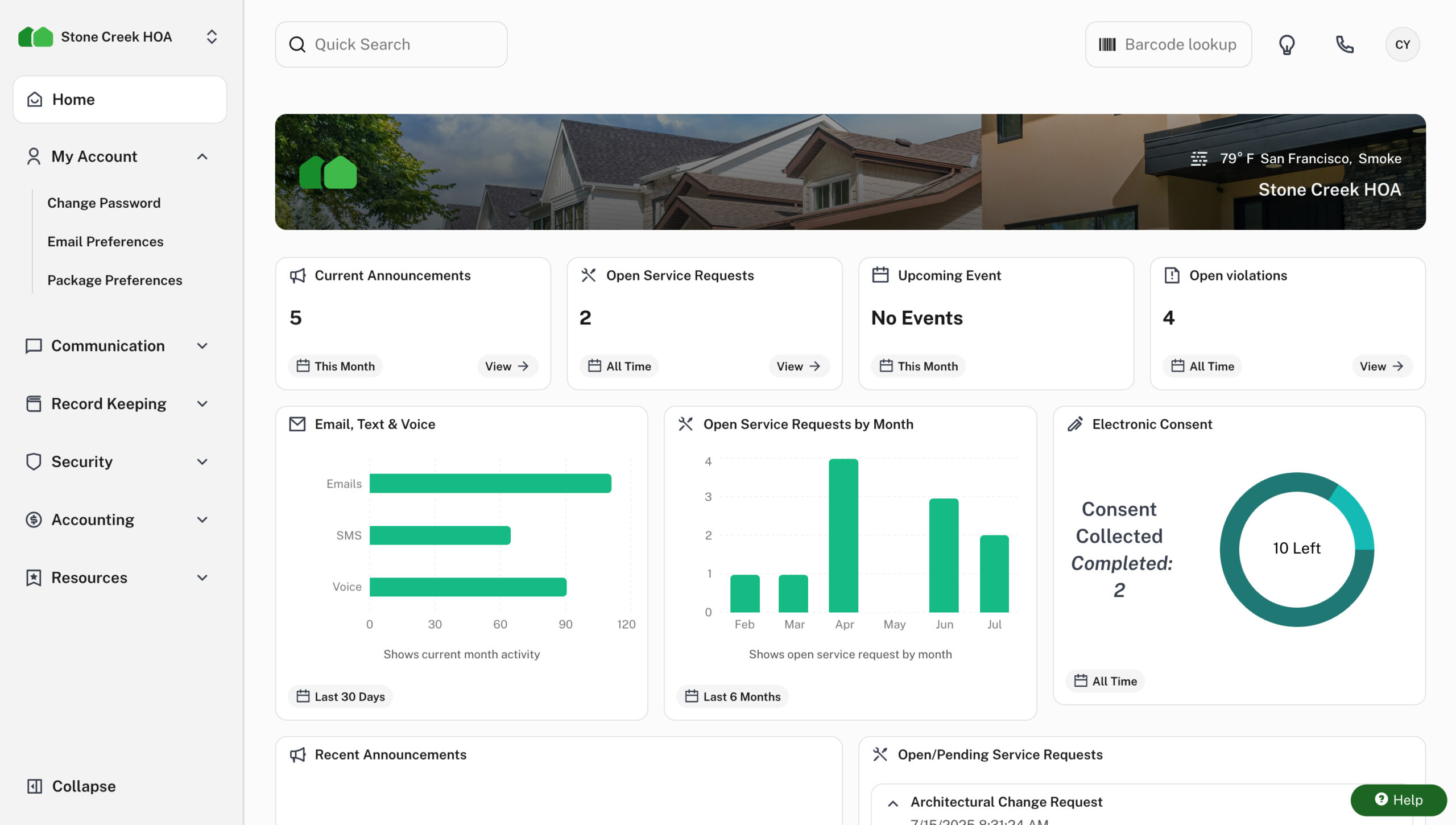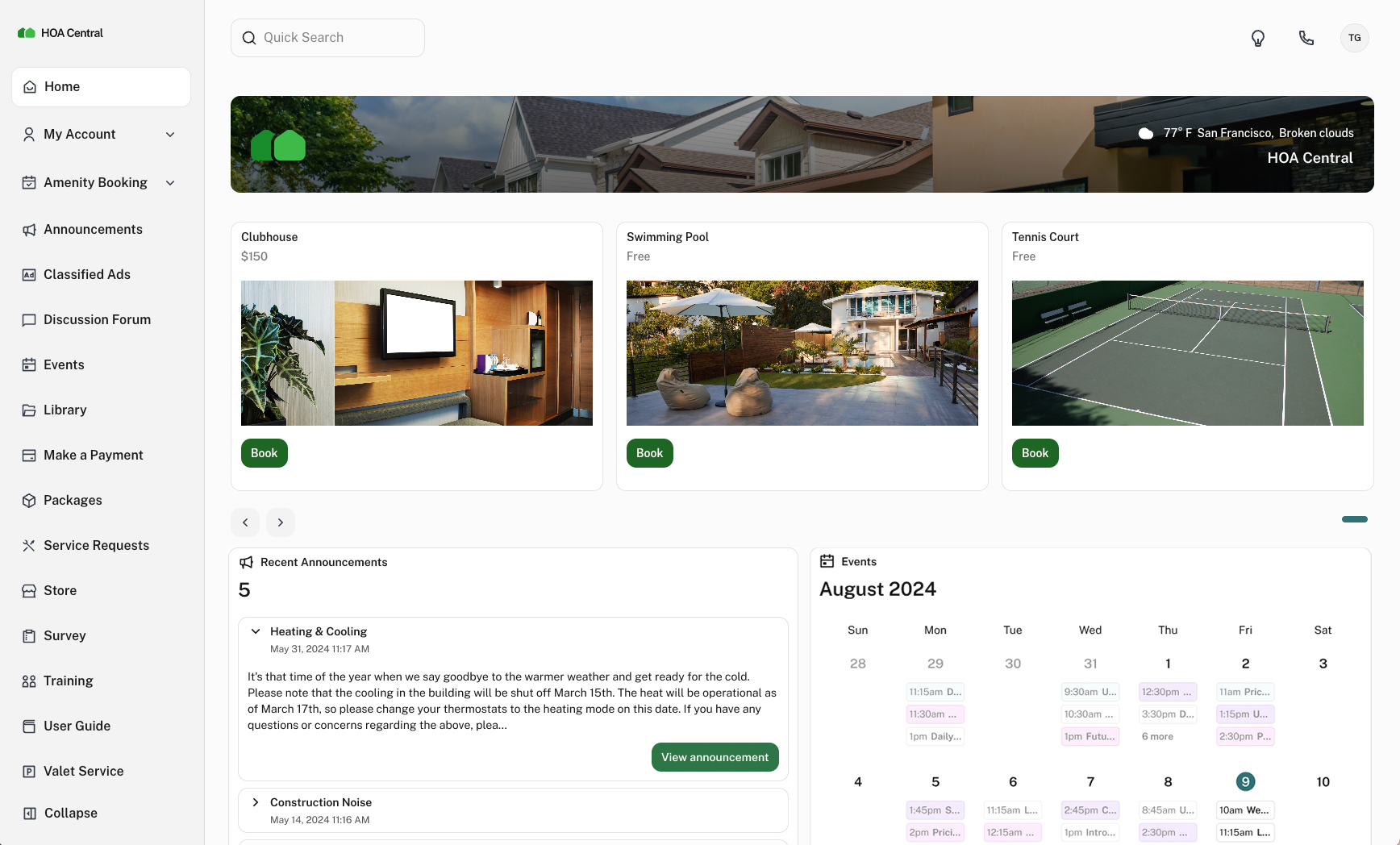Improve compliance in your HOA with violation tracking software

Rules are not meant to be broken in an HOA community. In fact, rules play an important role in maintaining property values, setting expectations, and preserving an enjoyable living environment for the community as a whole.
Some rules might not be popular, but as long as they are enforceable and serve a purpose, every member is expected to follow them.
Table of contents
- Why is it so hard to enforce rules?
- What if HOAs don’t enforce rules?
- How does violation tracking software work?
- How does software improve HOA compliance?
- Other ways to improve compliance
That being said, someone will inevitably break a rule. Whether it was an honest mistake, or done on purpose, enforcement is necessary. But anyone who has been tasked with the responsibility of enforcing rules in an HOA understands how difficult that can be.
Why is it so hard to enforce rules?
There are several reasons why it is hard to maintain a fair and consistent enforcement system. When multiple factors are working against associations, it can make rule enforcement feel like an impossible job.
- There are too many violations to follow up on
- There is no clear system for addressing violations
- Issuing violations doesn’t prevent owners from breaking rules in the future
- There is not enough time to manage violations consistently
- There is no one available to issue violations
- There is a desire to keep the peace, even if that means ignoring some violations
What if HOAs don’t enforce rules?
Sometimes it might feel easier to just let owners get away with violations, especially if they are minor. But ignoring infractions can actually encourage more people to break the rules.
That’s because when there are no consequences for unwarranted behavior, owners don’t have a compelling reason to abide by the HOA’s rules.
Enforcing rules is far from enjoyable, but someone has to do it.
How does violation tracking software work?
According to data collected by HOA Central, when asked what responsibilities took up most of their time, community associations cited “resolving violations” as the third most labor-intensive task.
25% of respondents said it took an average of 1 to 3 days to resolve violations, while another 25% said it took 4 to 12 months!
When HOAs use violation tracking software, resolution times are almost always less than a month unless the matter is very complex. It’s even possible to resolve minor infractions in a couple of days. Here’s how:
Violation tracking software consolidates violations
Instead of logging and updating violations on a spreadsheet or trying to manage them using paper, violation tracking software organizes every violation, including drafts, in a single location. This way, anyone with access to the tool can see how many violations are outstanding, how many are past due, and which home each violation was assigned to.
Some platforms, like HOA Central’s violation tracking software, even have a mobile app that makes it possible to log violations while performing routine inspections.
All existing processes are preserved
Good software is flexible, meaning there is room for customization. HOAs can transfer all existing violation types, categories, timeframes and applicable fines to the violation tracking software.
Different communities will have different processes, and software maintains those processes to make the transition effortless. What is different is how efficient it becomes to enforce rules.
Instead of trying to remember how lawn care infractions are handled, or if there is a fine associated with noise violations, you can add every detail into the system once, and forget about it.
Just select who the violation is being sent to, the violation type and stage, due date and attach any applicable documentation. If no corrective action is taken by the due date, you simply click a button to move the matter to the next stage.
You can also print out the violation notice and deliver it to an owner if they prefer to receive physical copies of letters/documents.
If the board needs to vote before a violation can be enforced, that can be established during the setup process, too. When a new violation is logged, the voters are automatically notified via email, and they can vote digitally instead of having to schedule an in-person meeting.
Payments for fines can be made through the software
Owners are already unhappy when they receive a violation letter, and if there is a fine attached to the letter, they may try to delay making a payment for as long as possible. This is especially true if they know management has not been vigilant about collecting fines in the past.
With violation tracking software, it is possible to attach a payment link to violation letters. This way, owners can pay fines online.
While some will continue to ignore fines for as long as possible, providing a convenient online payment option does increase the chances of owners taking care of the fine on time. The sting from the fine is dulled by the fact that they don’t have to go out of their way to write a check or visit management’s office to pay for something they don’t want to pay for.
Plus, management is far less likely to forget about outstanding fines when they have real-time data about all outstanding violations.
Complex matters may still take a longer time to resolve, but all correspondence is saved under violations, making it easier to produce evidence if an issue ever requires legal intervention.
How does software improve HOA compliance?
Okay, so HOA violation tracking software does a lot to streamline and automate rule enforcement processes, but how can it help with compliance?

When used regularly, software creates a system where violations are addressed promptly and consistently. As a result, owners (who talk to each other) see that there are consequences for breaking HOA rules.
The consistent enforcement gives owners a reason to comply, which ultimately reduces violations within an HOA community. Fewer violations mean less enforcement work for staff, and fewer conflicts between owners and the board.
Other ways to improve compliance
Having a robust violation tracking system in place will make violation management much easier. However, there is more an HOA can do to improve compliance.
Make sure rules and expectations are communicated clearly
Owners may have glanced at the very long list of bylaws, rules and policies adopted by the HOA, but they may not even be aware of some rules.
This problem can be addressed by making the association’s CC&Rs, bylaws, and rules and regulations easily accessible to everyone.
Many communities now use a website or resident portal to host governing documents online. However, you could also email your homeowners current copies of the documents so that they always have a copy on hand.
Send owners a notice about any rules that are coming into effect, rules that have been amended, or rules that will become important, once every 3 to 4 months so that they are aware of what the community expects from them. For example, send out a notice in early spring to remind homeowners about landscaping rules so they can prepare for lawn maintenance and other seasonal chores.
Aim to correct behaviors without punishing owners
People tend to respond better when they feel like they are being treated with respect. That’s one reason why most HOAs issue a warning letter before serving an official notice to owners.
A warning letter acts as a gentle reminder to homeowners, and it shows them that the HOA can be compassionate and reasonable. Furthermore, owners are more likely to comply with the rule if they’ve received a warning first. A violation notice never sits well with anyone, even if they have committed an offence.
If the offence is serious, then a warning letter is not likely appropriate, but many small violations can be resolved this way.
Assess the effectiveness of fines
Fines can be an effective deterrent, but they don’t always do the trick. Fines that are too low don’t work as well. You want to find a fee that is high enough to discourage an owner from repeating an offense, but not so high that it could create undue hardship.
In rare cases, an issue may need to be brought before a judge. But, look at other options available to your HOA before you go to court. This could include suspending an owner’s right to use shared facilities, or alternative dispute resolution.
Conclusion
The best way to improve compliance in your HOA is to ensure owners have access to the rules, and be consistent with rule enforcement. HOA Central can help you do both.







